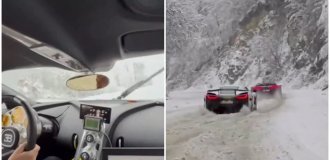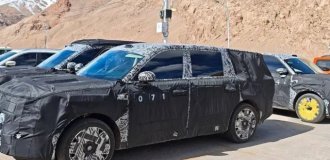Wikov 35 Kapka: forgotten Czechoslovak car (10 photos)
It was the very first Czechoslovak aerodynamic car and one of the first in Europe. Wikov 35, called Kapka, had streamlined body shapes, advanced for that time, which provided car less air resistance. 
Introduced in 1931, a strange-looking car attracted great attention of all, and onlookers, and eminent engineers. Someone's car frightened, there were those who admired her, but there were definitely not those who simply passed by this airplane-like masterpiece.
This is the Wikov 35, nicknamed the blob for its characteristic appearance. 
Wikov, the so-called automobile company, located in the Czech Republic. In our few people remember her days, she produced few cars, and each of them was unique and made to order. It mainly concerned the body, since the chassis was more or less unified. 
Piece production of bodies allowed the company to make bold experiments in the era of the emerging aerodynamic style. Water drop then it seemed the standard of aerodynamics, so they took it, as they say, for the basis for the creation of the body. 
In terms of the technical part, the machine is maximally unified with the usual Wikov 35, a middle-class passenger car that was common for those years. carbureted a four-cylinder water-cooled engine develops 35 hp. 
The gearbox is three-speed, the second and third with synchronizers, sort of like. Rear drive. 
There is a curious feature in the management of this machine - the brake pedal at it on the right, and the gas, respectively, in the middle. I wouldn't dare to leave now on it on a public road because 'mix up pedals" in this case would be a literal formulation. 
The windshield is divided in two and the view through it, to put it mildly, is not very. Each of the halves can be slightly opened with a special handle, for better ventilation. There is no interior heater. 
The car has standard turn indicators. On the front, they look like flip flags. An effective solution, such were installed on expensive cars in those days when the direction indicators themselves were not required. 





















